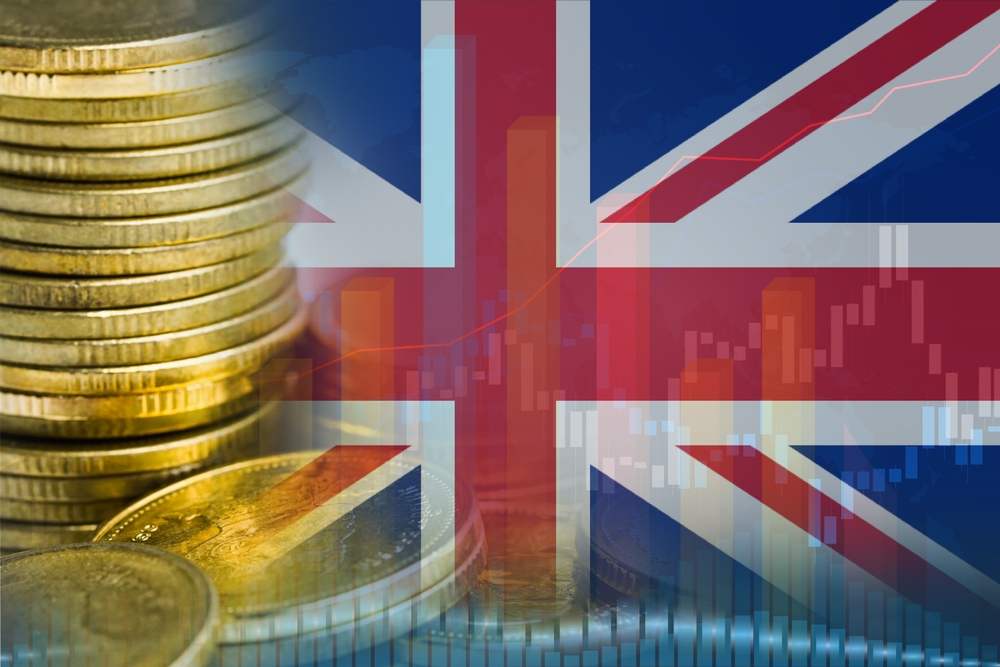The U.K. economy faced an unexpected contraction in October, reflecting growing unease among businesses and consumers ahead of the newly elected government’s budget announcement. The Office for National Statistics (ONS) reported a 0.1% decline in Gross Domestic Product (GDP) on a monthly basis, defying expectations of modest growth. This marks the second consecutive monthly downturn, raising questions about the nation’s economic trajectory as it grapples with inflation, tax policy shifts, and subdued consumer confidence.
A Surprise Decline in GDP
The ONS data revealed a sharper slowdown than economists had forecast, as production output experienced a notable decline. Projections from Reuters had anticipated a modest 0.1% rise, making October’s performance a stark deviation from expectations. This downturn follows another 0.1% contraction in September, signaling sustained economic headwinds. Notably, real GDP saw a marginal increase of 0.1% in the three months leading up to October, compared to the prior quarter ending in July. However, this growth was insufficient to offset the monthly declines, underscoring persistent challenges in key sectors.
Currency Market Reaction
Sterling reacted to the disappointing economic figures, sliding 0.3% against the U.S. dollar to $1.2627 in early trading. The currency’s decline reflects broader investor concerns about the U.K.’s economic outlook, particularly amid ongoing uncertainty surrounding government policy changes.
Government Response: Balancing Growth and Controversy
U.K. Finance Minister Rachel Reeves acknowledged the concerning GDP figures, calling them “disappointing” but reaffirming the government’s commitment to long-term growth. Reeves emphasized policies such as a cap on corporation tax and a newly unveiled 10-year infrastructure strategy as pivotal to economic recovery. Reeves had previously introduced a budget aimed at raising £40 billion through tax reforms, including hikes in employer National Insurance payments and capital gains tax. However, these measures have drawn criticism from various sectors. A recent report from job platform Indeed highlighted a potential chilling effect on recruitment, linking the National Insurance increase to a slowdown in job postings.
Interest Rates and Inflation
The October GDP report adds another layer of complexity to the Bank of England’s monetary policy decisions. Despite signs of economic fragility, the central bank is expected to maintain its gradual approach to lowering interest rates. Following a 25-basis-point rate cut in November, the Bank of England is likely to hold rates steady at 4.75% during its upcoming meeting. Thomas Pugh, an economist at RSM, warned of stagflation risks, noting that inflation creeping back toward 3% complicates recovery efforts. “We still expect the economy to reaccelerate into 2025,” Pugh said, though he tempered expectations for short-term growth, revising his fourth-quarter forecast to less than 0.3%. Economics director Suren Thiru echoed these sentiments, stating that while a rate cut this month is unlikely, policymakers remain cautious about recent inflationary trends. “The likelihood of a rate cut this month remains low,” Thiru noted, suggesting that any significant easing of policy may be deferred until February.
Consumer Confidence at a Low
Adding to the challenges is weak consumer confidence, further dampening economic activity. With inflation still biting into household budgets, and uncertainty about future tax policies, both consumers and businesses appear hesitant to spend and invest. This has created a feedback loop of reduced economic momentum, heightening concerns about a prolonged slowdown.
Looking Ahead
The latest economic data paints a complex picture for the U.K., with growth prospects hindered by policy uncertainty and inflationary pressures. While government initiatives aim to stimulate long-term growth, their immediate impact has been mixed, drawing criticism from businesses and economic experts alike. Despite the gloomy outlook, some analysts remain optimistic about a rebound in 2025, contingent on stabilizing inflation and stronger consumer confidence. As the Bank of England weighs its next steps, the country’s economic trajectory will hinge on carefully balanced policies to avoid slipping further into stagnation.
Conclusion
October’s unexpected GDP contraction underscores the fragility of the U.K. economy in the face of uncertainty and policy shifts. With inflation still a concern and consumer confidence waning, the path forward requires strategic policymaking and measured optimism. While long-term growth remains the government’s goal, navigating these immediate challenges will be critical in setting the stage for a more stable economic future.


